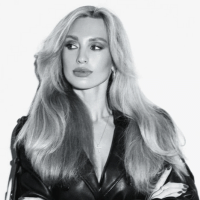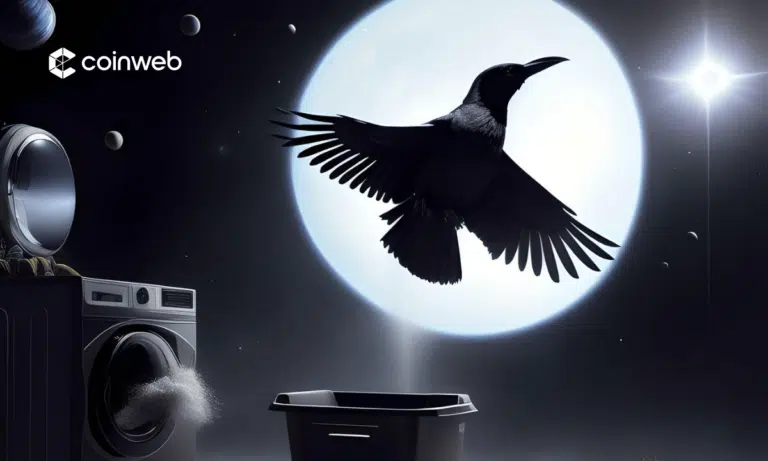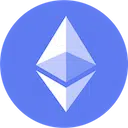TLDR
AI art refers to artworks created or enhanced with the help of artificial intelligence. Artists create AI art by training AI models on vast datasets of images and using algorithms to generate or edit art based on the learned patterns. Different types of AI can generate art, including
- Convolutional Neural Networks (CNN)
- General Adversarial Networks (GAN)
- Neural Style Transfer (NST)
Artificial intelligence art differs from human art in the creative process and use of AI image generators. Some famous AI-generated art pieces include “Portrait of Edmond de Belamy.” There are several controversies surrounding AI art. Some of these include authorship, creativity, and the impact on the art market.
AI art brings several benefits. It improves artistic potential by opening new creative pathways and speeding up the creative process. It also has disadvantages, including losing the human touch and originality. AI-generated art’s legality depends on factors like copyright and fair use.
Introduction – What is AI Art?
AI art uses artificial intelligence (AI) techniques to create or enhance artistic works. It involves training AI algorithms with large amounts of data, such as images, music, or text. These machine-learning models learn patterns, styles, and characteristics from their fed data. Once they’ve learned these patterns, they can generate digital art by applying those learned styles.

One of the notable aspects of AI art is its ability to generate novel and unexpected results. There has been a growing connection between AI and cryptocurrency in the art industry. The fusion of blockchain technology with AI art has expanded the possibilities available to artists.
Blockchain technology allows for the creation of NFT art. Over time, NFT art has gained popularity because it makes it simple to confirm that digital artworks are original. This enables artists to monetize and sell their digital artwork in a new and innovative way. Artificial intelligence art goes beyond replicating existing art styles. It is a collaborative and innovative field.
What types of AI can make art?

Artists and researchers have been able to explore new creative frontiers and expand the possibilities of what art can be. They achieve this through neural networks, deep learning, and AI art generator software. There are three types of AI mostly used for creating art. A breakdown of these three networks shows how AI art generators work to create art pieces.
Convolutional Neural Networks (CNN)
CNNs are an AI machine learning model for image-related tasks, including AI Art. CNNs are a type of artificial neural network that has revolutionized the field of computer vision. They aim to analyze visual data, such as images, and identify patterns.

The idea of using CNNs for digital art emerged when researchers noticed their ability to learn and imitate art styles. Extensive training in vast collections of crypto artworks made this discovery possible. By studying paintings by famous crypto artists, CNNs can grasp the elements that create various artistic styles. After training, they can generate NFT art in distinct styles. They can also edit existing images to infuse them with a similar artistic flair.
General Adversarial Network (GAN)
In the context of AI visual art, GANs make it easy for individuals to create NFT art. GANs excel at producing novel samples, ranging from visual art to music. A GAN’s AI art generator network learns to create new samples, such as images or music.

Meanwhile, the discriminator network learns to distinguish between real samples and generated samples. The generator becomes adept at producing complex samples through a competitive learning process. The discriminator is then tasked with differentiating these complex samples from real ones.
Artists have harnessed the immense power of GANs to unleash a new wave of original and imaginative crypto artworks. General adversarial networks do well at capturing diverse artistic styles. This allows artists to explore uncharted aesthetic territories and conceptualize groundbreaking ideas.
Neural Style Transfer (NST)
NST involves transferring the artistic style of one image onto another. Neural Style Transfer is an exciting technique that combines the power of deep learning with artistic style. The idea behind NST is to merge one image’s content with another image’s style to create new artwork.

NST, or Neural Style Transfer, uses pre-trained CNN models like the VGG network. It uses the models to analyze both content and style images. A content image is the base image that serves as the foundation of the final artistic output. A Style image is a reference or inspiration for the final images in the desired artistic style.
It extracts important features from both images. Then, a machine learning algorithm combines these features to create a new artistic image. This final image keeps the content image’s structure but adopts the reference image’s artistic style. It’s like fusing two artistic influences into a single piece. With NST’s application in the crypto sector, artists and creators can explore new horizons.
What is the Difference Between AI Art and Human Art?
The significant difference between images created by an AI art generator and a Human lies in the creative origin of the artworks. Humans create art using their emotions and imagination to produce images that bring their perspectives to life.

AI algorithms generate stunning and unique artwork from learned patterns and styles in the training data. They do not have personal experiences and emotions that humans bring to their artistic creations.
Humans can not fuse their work with technology. Humans use their art for self-expression, communication, and exploration of complex ideas. They aim to evoke emotions, provoke thoughts, or inspire change in the viewer. AI-generated images often lack the personal narratives human artists infuse into their work.
Are There Any Famous AI Art Pieces or Creators?
Yes, several famous AI art pieces and creators have gained recognition in the art world. These artworks showcase the creative potential of ai art generators. One such famous piece is “Portrait of Edmond de Belamy,” created by the art collective, Obvious. They created this art piece with a Generative Adversarial Network (GAN).

The Portrait of Edmond de Belamy sold at Christie’s for approximately $432,500 in 2018. It was the first AI-generated artwork to sell at such a prestigious venue, bringing digital art into the mainstream spotlight.
Botto, a decentralized AI artist running on an AI algorithm, has also made $3 million from 75 AI-generated NFT collections. Botto uses Vector Quantized Generative Adversarial Network (VQGAN), Contrastive Language-Image Pre-training (CLIP), and OpenAI’s GPT-3 to produce NFT art. Botto’s community then votes on which NFTs will be auctioned off on the SuperRare platform.
Successful AI art creators like Botto bring more attention to the NFT world and show the potential for success in the AI art space.
What are the Controversies Surrounding AI Art?

The use of AI art generators in creating art has sparked discussions within the art community. Using AI art generators to create images is causing controversy because of its effects on real artists. The art industry is very competitive and already faces issues of inequality. Some key controversies surrounding AI art include
- Authorship and Originality
One significant controversy revolves around the attribution and authorship of AI-generated artworks. Since artificial intelligence algorithms are responsible for the creative process, there is a debate about who should receive credit. Some argue that credit should go to the AI, the artist who inputted the prompts, or the programmers who developed the algorithm. This raises questions about the role of human agency and the definition of artistry in the context of AI-generated images.
- Creativity
Critics argue that AI lacks true creativity and intentionality. It uses learned patterns and algorithms to generate its artistic outputs. They argue that genuine creativity comes from the human mind, experiences, and emotions. Others believe AI algorithms can generate novel and creative outputs, even relying on existing data.
- Impact on the Art Market
The growth of AI art brings worries about its effect on the art market. As AI-made art gains prominence in the crypto era, a human artist may struggle to gain recognition. They may also face several challenges in competing in the market. It also raises questions about the authenticity and uniqueness of AI art, which affects the value and perception of art.
Advantages of AI Art in the Crypto Era

Benefits of AI art include:
Accessible Art Ecosystem
The crypto era brings new opportunities for AI artists by leveraging blockchain technology. Blockchain-based platforms allow artists worldwide to showcase and sell their AI-generated artworks. These platforms are known as NFT marketplaces. They provide an accessible art ecosystem that helps emerging talents gain recognition.
Immersive Crypto-Enabled Experiences
AI-generated art can potentially bridge the gap between the physical and digital worlds. Blockchain technology makes it possible to create virtual galleries and augmented reality (AR) installations. This provides unique and captivating ways to display and interact with AI art. It expands the possibilities of artistic expression by offering innovative ways to engage with AI art.
Efficiency and Creativity
AI art generators make art creation faster and allow artists to try different ideas. Artists can use AI tools to explore various styles and techniques and quickly change their art. This improves workflow and allows artists to experiment and refine their creative visions.
Disadvantages of AI Art

While art by AI presents exciting possibilities, it also has some disadvantages:
Over-Reliance on Technology
There is a worry that relying too much on an AI art generator and blockchain technology could overshadow the creative process’s human element. Things like personal experiences, emotions, and intuition that make art unique might take a backseat to the power of AI algorithms. This heavy reliance on technology and NFT tools could prevent artists from exploring new artistic paths. It could also restrict the variety of creative expression.
Devaluation of Human Creativity and Labor
With the rise of AI-generated art, ongoing debates exist about the potential devaluation of human creativity and labor. Human artists may find it difficult to compete with the efficiency and novelty of AI-generated artwork. This raises questions about the value and recognition of human artistic contributions in the crypto era.
Ethical Implications
AI art in the crypto era sparks discussions about the ethical implications of using algorithms to create art. Questions arise about authorship, ownership, and the ethical responsibilities associated with AI-generated artworks. The fact that AI is causing controversies raises critical ethical questions. The crypto community needs to address these questions to ensure the responsible and fair use of AI in creating and sharing artwork.
Is AI Art Legal?
AI art is generally legal. The laws and regulations surrounding digital art may vary across jurisdictions. Although, there are certain legal considerations to keep in mind. One significant aspect is copyright law. Copyright protection applies to original works of authorship, including artworks. When it comes to AI-generated art, questions arise about the authorship and ownership of the artwork.

Since AI algorithms play a significant role in creating, determining who holds the copyright can be complex. Some jurisdictions grant the copyright to the human creator who initiated the AI process. Other jurisdictions may consider it joint authorship between the human creator and the AI algorithm.
Legal frameworks are evolving in response to the rapid advancements in AI-generated art and blockchain technology. Policymakers and legal experts are still exploring and discussing the legal implications of AI art. They aim to balance encouraging innovation and protecting artists’ rights.
Conclusion
AI art in the crypto era holds transformative potential. This is due to the interplay between blockchain technology, cryptocurrencies, and AI algorithms. This dynamic combination has opened up new possibilities for artists and art enthusiasts alike.

The decentralized nature of blockchain ensures a level playing field. Through non-fungible tokens (NFTs) and smart contracts, artists can prove the authenticity of their digital art. They can also sell and safeguard their AI-generated artworks.
Integrating AI algorithms in the art creation process offers exciting opportunities for innovation. Artists can leverage AI tools to push the boundaries of artistic expression. The fusion of AI and blockchain technology facilitates immersive experiences. It blurs the lines between the physical and digital realms via virtual reality (VR). This creates new and exciting possibilities for art interaction
AI art gets its images from various sources. This includes public collections of images, databases of artwork, and even photos taken by artists.
AI creates art by using algorithms that analyze and manipulate visual data. AI algorithms learn patterns, styles, and features from existing images through training. They generate new images or edit existing art based on the data they learn.
Automated programs called AI art bots use AI algorithms to produce artwork. These bots are often deployed on social media platforms and interact with users. They can generate art based on user inputs and respond to specific hashtags or keywords.
Yes, you can use AI art to make money. Before using Ai generators to create and monetize art, you must consider legal and ethical aspects like copyright.







